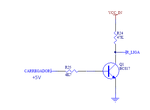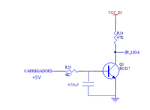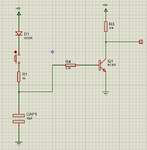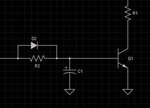FMoura
Newbie level 4

- Joined
- Sep 18, 2013
- Messages
- 7
- Helped
- 0
- Reputation
- 0
- Reaction score
- 0
- Trophy points
- 1
- Location
- Belo Horizonte, Brazil.
- Activity points
- 54
Happy new year for all.
I´m a little problem in my project.
I have a transistor (BC817) working as switch, but I need a little delay in your output.
For exemple:
When it allow current flux and the base goes to low state, I need it hold on flux for 0.5 second or 1 second.
I´m thinking in use a capacitor.

Carregador is between two ICs.
I can make like this...?

How calculate the optimum value to capacitor?!
tnx very much
I´m a little problem in my project.
I have a transistor (BC817) working as switch, but I need a little delay in your output.
For exemple:
When it allow current flux and the base goes to low state, I need it hold on flux for 0.5 second or 1 second.
I´m thinking in use a capacitor.

Carregador is between two ICs.
I can make like this...?

How calculate the optimum value to capacitor?!
tnx very much


